On Courage and Anne Brigman
This past week or two, while struggling with feeling stuck, doubting myself and worrying about the future of my career, I was told that I am courageous to do what I do, and that I have tenacity. Being told that I exhibited such traits of strength felt affirming. I know that this is just the beginning and I have ultimately will go farther, and that my success need not be defined by what others believe it should be.
I ruminate on other women creating in the visual arts who have been courageous and shown tenacity. One women who dared to dream beyond the status quo and broke barriers is Pictorialist photographer and poet Anne Brigman.
“Via Dolorosa,” by Anne Brigman, 1910
I discovered Brigman’s work by accident. I was in high school and looking through photography books in my school’s library when I suddenly stumbled upon a book, Camera Work. Camera Work archives the photographs that were published in the magazine of the same name, started in 1903 by photographer Alfred Stieglitz. Stieglitz’s intention was to show photography as fine art in a time where it was seen as a lesser visual art form. Awed by what I saw, I instantly became enamored with the mysterious and poetic photos of Anne Brigman’s and still am to this day. Her oeuvre has greatly influenced my own photography.
A friend I shared her art with recently, much like how I reacted when I first saw these images, was startled by the modernity of Brigman’s photographs. There is an extraordinary magic to them that transcends the times they were made in.
Anne Brigman was born in Hawaii in 1869 to missionary parents, and was one of many children. At some point early on, they moved to Northern California. At sixteen, Brigman married a sea captain and went on voyages with him. Brigman and her husband separated sometime before officially divorcing in 1910, so she lived most of her life as a single, independent woman, a brave thing to do in the early 20th century. In Oakland and Berkeley, she held artist teas with writers, visual artists, and actors, which were written about in papers like The Oakland Tribune.
Self Portrait by Anne Brigman
Dressed in practical clothing as seen above, at a time when women were expected to wear corsets and dresses and look feminine and graceful, Brigman climbed through rugged landscape of the Sierra Nevada mountains, armed with her her camera and props to make photographs. This was extremely bold to do. Brigman said to journalist and art critic Frank Crowninshield in 1916, “where I go is wild — hard to reach, and I don’t go for Alfred Stieglitz or Frank Crowninshield or Camera Work or Vanity Fair, but because there are things in life to be expressed in these places.” She felt invigorated by exploration and had an "ache in (her) legs for flight...(and)... the wild, wonderful need to stampede." That wanderlust is something I relate to, as a fellow restless human who greatly enjoys wandering and adventuring.
“Dawn,” by Anne Brigman, 1909
In a time when the male gaze of women reigned supreme, Anne Brigman was one of the first women in photography to photograph herself and other women-her sisters-in the nude. She broke the glass ceiling of by photographing women draped over and bending their naked bodies through and around wild gnarled trees, inside of caves, on mountainsides, and beside glistening ponds.
“The Bubble,” by Anne Brigman, 1909
Despite her successes in exhibitions and other recognition, not uncommon to now still, Anne Brigman endured sexism often being the sole women in male dominated spaces. An example of this was at Stieglitz’s studio, where the photographers of Camera Work and peers looked at her work through a sexualized lens. They neglected to see the visible poeticism and non-sexualized wildness of the imagery she was producing. Men felt it acceptable to criticize her own body as presented in the images she was making.
The below image Soul of the Blasted Pine, was criticized and later removed from a 1908 Idora Park Exposition for being a vulgar image of a “scrawny dame” (Edwards, Robert from Jennie V. Cannon: The Untold History of the Carmel and Berkeley Art Colonies). A woman asserting her independence and displaying her nude body, through a male perspective, automatically means she is sexualizing herself and wanting attention from men, despite what the woman’s intentions may have actually been.
“Soul of the Blasted Pine,” by Anne Brigman, 1908
Brigman wrote about these challenging experiences in the local newspaper, as she was fearless about speaking up. Granted, it’s important to note that undoubtedly being a white woman, who was educated and not of an impoverished background, gave her the privilege to be heard. Nonetheless, her speaking out against sexism in the photography world, took guts.
Additionally, although never officially verified, it is often believed that Anne Brigman was in a serious accident in her 20’s, which nearly severed one of her breasts, and this may have influenced her artistic choices to etch on, paint on, and otherwise transform her images by hand in the darkroom. It is likely that this was not the sole cause of her methods as it seems as much informed by her overall creative vision. However, the trauma from this experience lingers in the haunting ghostly sensibility of her images.
“The Heart of the Storm,” by Anne Brigman, 1912
Brigman continued to make work throughout her life, her later images being of the figures by the sea, and the water itself instead of bodies amidst redwood trees. Her visible love of landscape and light was always evident though.
“Golden Bough,” by Anne Brigman, 1931
Anne Brigman by Louis Fleckenstein in 1935
In 1949, she published a book of her photographs and poetry that she had been working on since the 1930s, entitled Songs of a Pagan. You can see some of it in digitized form here (thanks Yale library!). A year later, Anne died at the age of 80, at her sister’s home in El Monte.
Here’s to bravery, and to the fellow artists reading this, even while you stay home and isolate to remain healthy safe during the spread of this pandemic, I hope that discovering Anne Brigman’s work inspires you to creatively experiment, and not give in fear or those who put you down. Stay brave.
Also-don’t forget to stay hydrate and get any sunshine you can!
With love to you all,
Tara

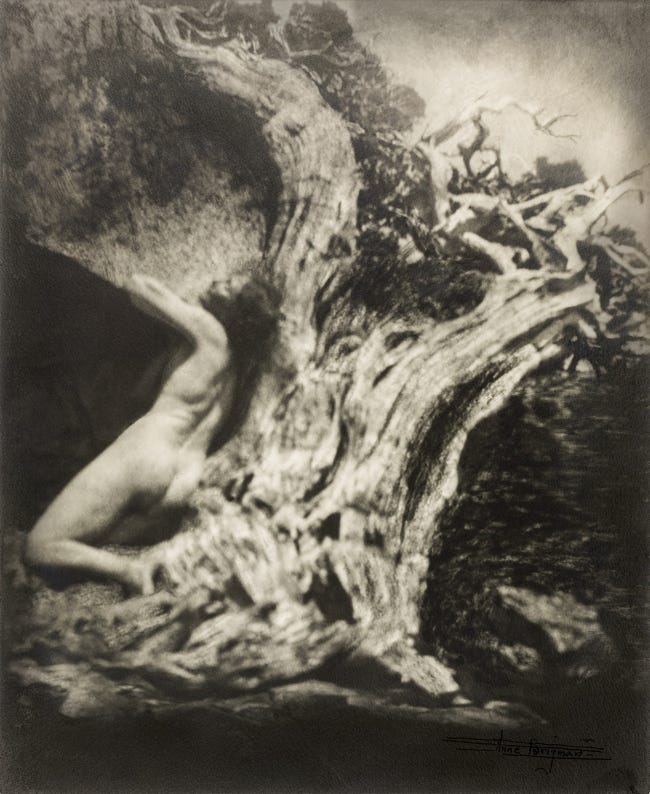
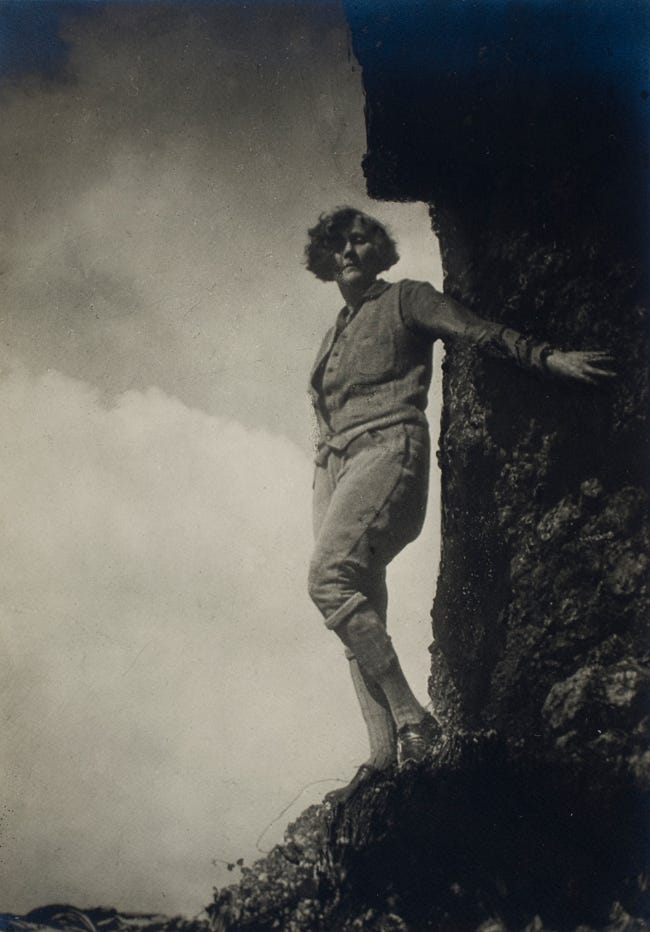
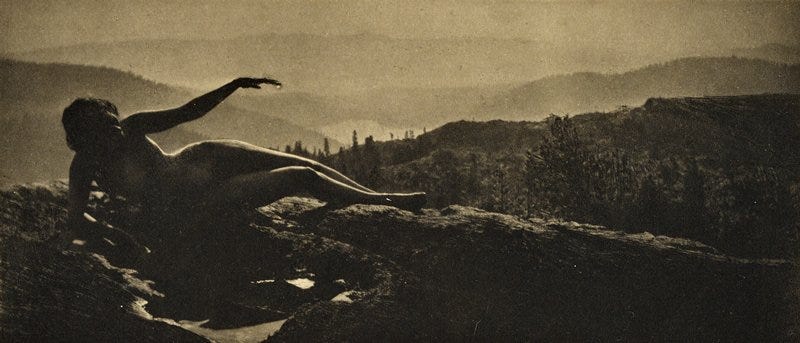
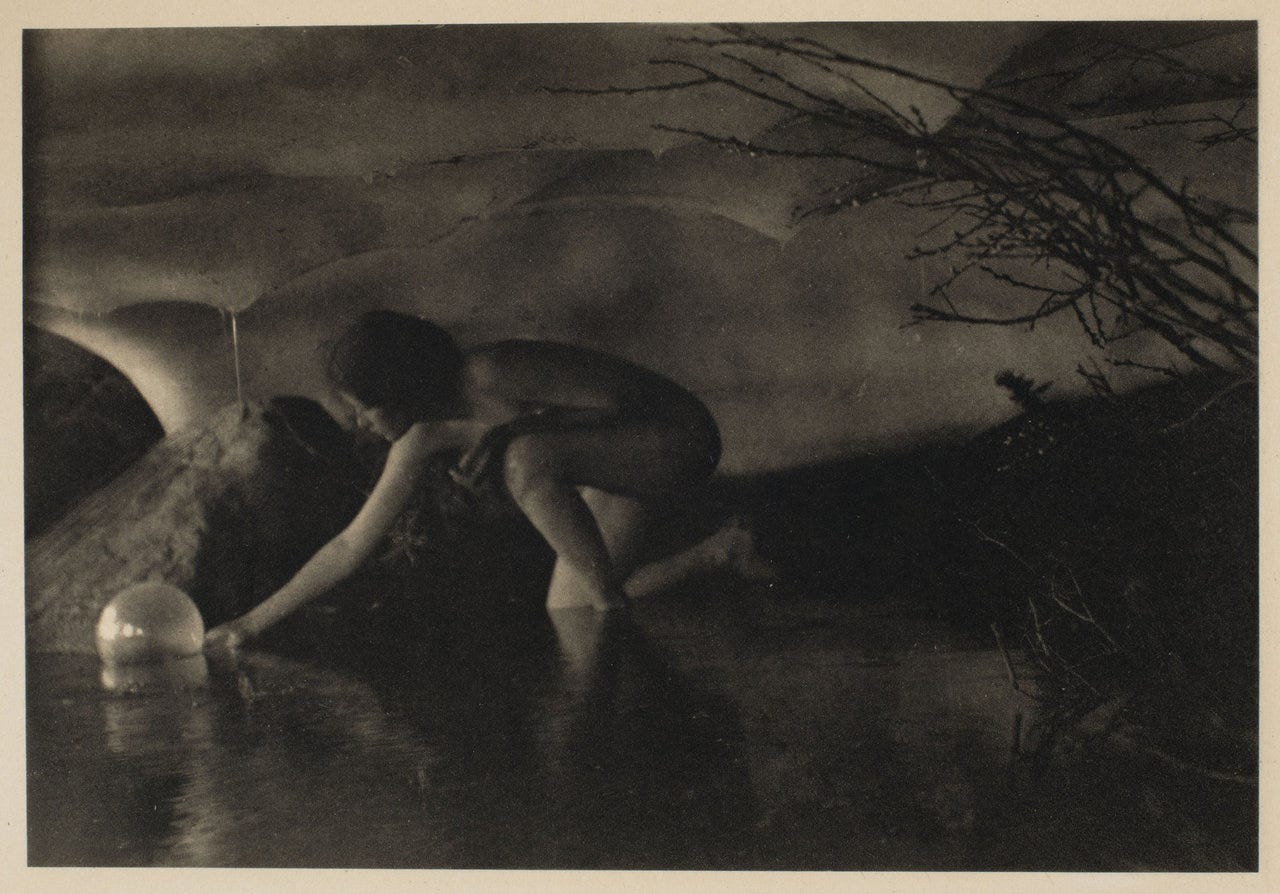
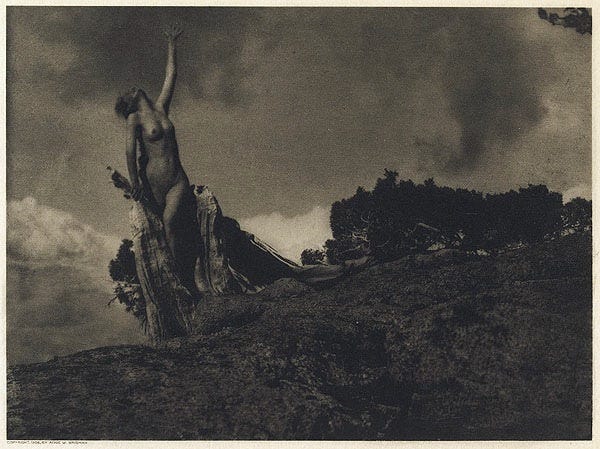
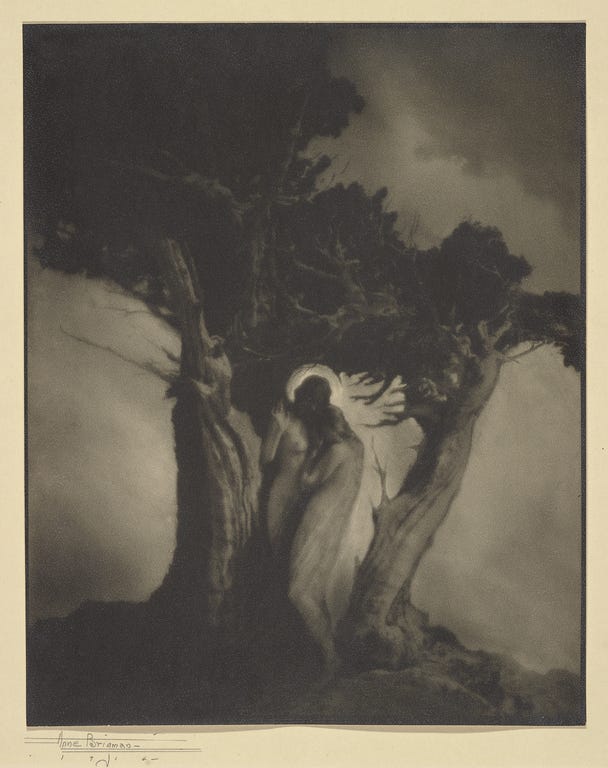
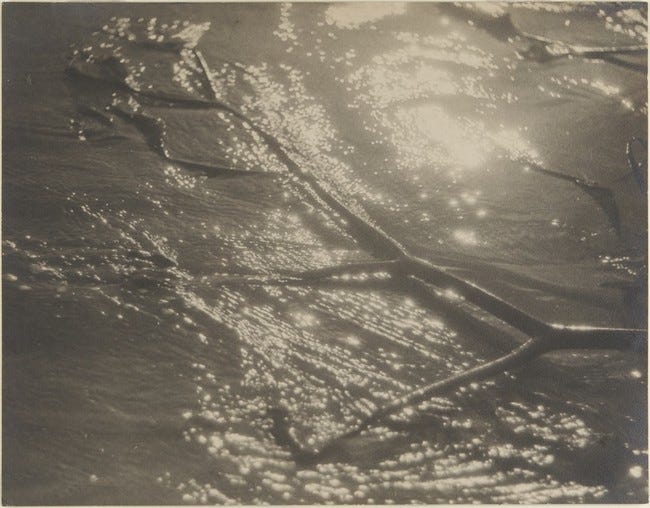
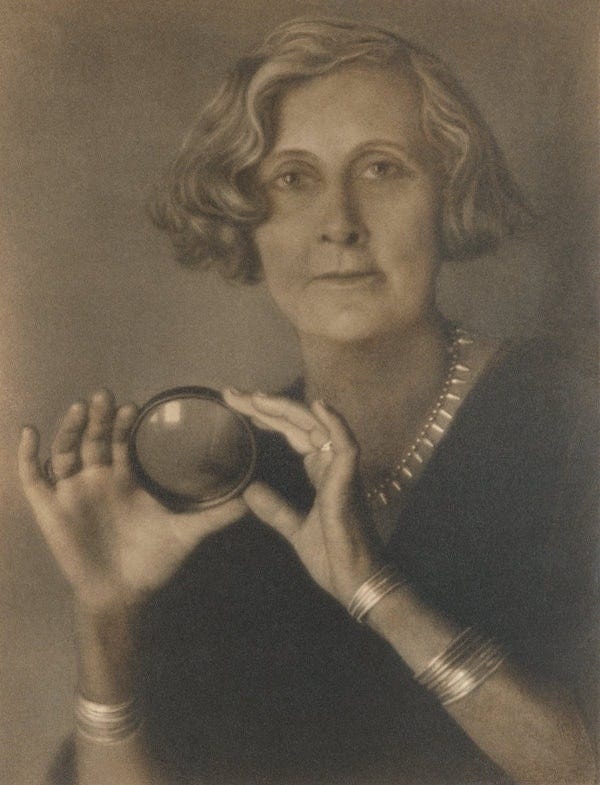
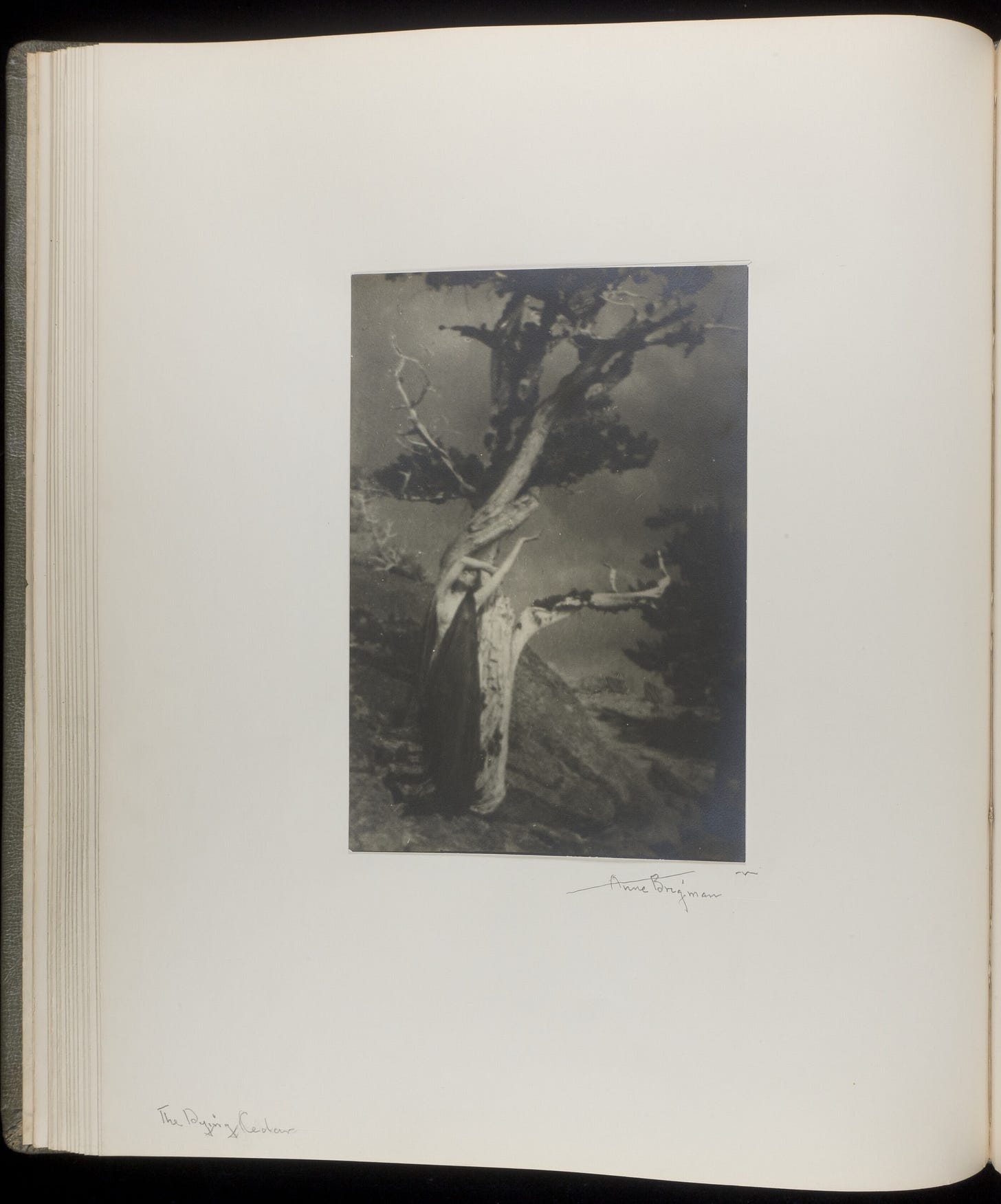
LOVE her work always 🖤
Stunning work. Thank you for the introduction.